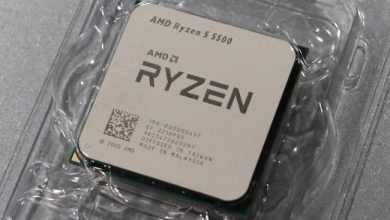PC & Components
Get the Latest headlines on computer hardware news, and reviews, including analysis, features, and opinions on the best personal computers news stories, photos and explore more on Desktops and PCs
-
 June 5, 2023
June 5, 2023Which Port should we use on a gaming PC: DisplayPort or HDMI?
Modern personal computers can generate a lot of content. To display this content on computer monitors or TVs, we need…
-
 May 20, 2023
May 20, 2023Exploring Secure Boot: Enhancing Security with UEFI’s Essential Feature
Today, I want to discuss Secure Boot, a security feature that comes along with UEFI. It has faced significant criticism…
-
 August 1, 2022
August 1, 2022The AMD Radeon RX 7900 XT will have a VRAM memory bandwidth of 20 Gbps
We are gradually discovering more about the following RDNA3-based AMD graphics cards; this time, it matches the most potent model,…
-
 July 28, 2022
July 28, 2022Future graphics cards from AMD and NVIDIA start to surface with their names
Although their debuts are still some time off, AMD and NVIDIA have already started registering the names of their following…
-
 July 6, 2022
July 6, 2022Intel updates its Media Q2 drivers to add support for Intel Raptor Lake S and P
The Q2 Media Drivers from Intel have been upgraded to work with the following Raptor Lake processors. The Intel Raptor…
-
 May 19, 2022
May 19, 2022How to Pick the Best Processor for Your Computer
A computer comprises various essential components that would be useless without them. The CPU is the PC’s brain, and it…
-
 May 10, 2022
May 10, 2022The AMD Radeon RX 6950 XT, RX 6750 XT, and RX 6650 XT graphics cards are now available
Today, AMD has revealed the AMD Radeon RX 6×50 XT, the expected refresh of its 6000 series GPUs. The AMD…
-
 May 9, 2022
May 9, 2022Why are SSDs with larger capacities faster?
If you’ve ever purchased an SSD, you know that larger capacities come at a more fantastic price, which, depending on…
-
 April 4, 2022
April 4, 2022Version 22.3.1 of AMD Radeon Software would be modifying CPU settings without permission
According to WCCFTech, version 22.3.1 of the AMD graphics drivers –AMD Radeon Software— appears to be changing the system’s CPU…
-
 March 28, 2022
March 28, 2022Two days before the event, Intel releases a fresh teaser for the Intel Arc
Intel’s graphics division has posted a new teaser video on Twitter two days after unveiling the new Intel Arc dedicated…
-
 March 27, 2022
March 27, 2022MSI GeForce RTX 3090 Ti SUPRIM X with 480W TDP and 16-pin connector has been leaked online
According to Videocardz, the MSI version of the NVIDIA GeForce RTX 3090Ti has been leaked, a version of the card…
-
 March 25, 2022
March 25, 2022AMD intends to release a Ryzen 7000 series processor with a 170 W TDP.
AMD has announced new 4000 and 5000 series CPUs to round out its current Zen3 and Zen2 processor portfolio, but…
-
 March 17, 2022
March 17, 2022The Intel database shows a new DG2MB GPU.
Now that Intel’s new discrete graphics for laptops will be released on March 30, Igor’s Lab has discovered an odd…












